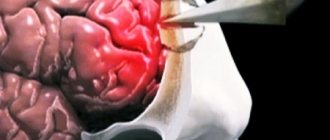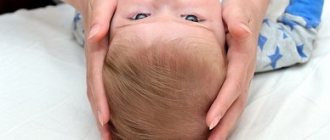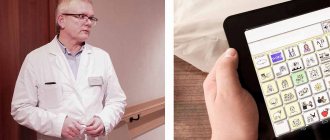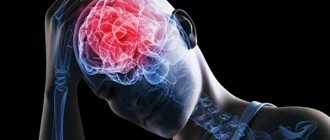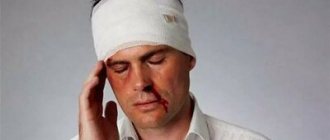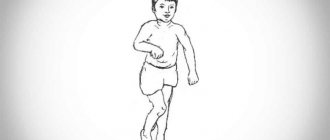Belkina Yulia Borisovna
Speech therapist
Pinchuk Elena Anatolyevna
Deputy chief physician for medical work, kmn, neurologist, doctor of physical and rehabilitation medicine
Lipovka Nadezhda Sergeevna
Head of the Department of Medical Rehabilitation, Physician of Physical and Rehabilitation Medicine, Neurologist
Ermakova Elena Vladimirovna
Speech therapist
Yakimova Anna Sergeevna
Speech therapist
Sobolev Arkady Igorevich
Doctor of physical and rehabilitation medicine, neurologist
Swallowing is an important and complex process that involves the functioning of a wide variety of muscle groups and cranial nerves. And impaired swallowing or dysphagia is one of the key problems in organizing nutrition in patients who have suffered a stroke.
It is worth noting that swallowing disorder refers to any, even minor, difficulty or discomfort when moving food into the stomach. Dysphagia includes:
- inability to swallow;
- disturbances in food movement;
- unpleasant disorders associated with food retention, etc.
Moreover, the degree and nature of the disorders may be different for each patient. Doctors note that even with serious illnesses, complete inability to swallow is quite rare. In most cases, patients have difficulty swallowing, etc.
Symptoms of dysphagia
Symptoms of dysphagia in patients also vary from person to person. Here you can find:
- restriction of tongue movements
- weakness of the oral muscles
- salivation;
- inability to form a food bolus;
- slow onset of the swallowing reflex;
- choking;
- retention of food in the mouth, etc.
In most cases, after a stroke, patients have problems taking in liquids or liquid foods. In some cases, patients even have to learn to eat again.
I would like to note that the reason for such difficulties may lie in the fact that in case of various types of violations, incl. strokes, the nervous system suffers, as a result of which sensitivity may be impaired. For example, patients may feel the presence of food in the oral cavity on only one side of the mouth, which causes difficulty chewing and swallowing. In some cases, pathologies of the central nervous system can lead to loss of taste or problems with saliva production.
Among the main complications of dysphagia are:
- penetration of food into the respiratory tract;
- breathing problems;
- pneumonia;
- dehydration;
- exhaustion.
Signs of swallowing problems after a stroke
Please note if you or your relatives have:
- choking while eating
- nasal voice
- shortness of breath when eating
- cough
- refusal to eat after a stroke
These could be signs of a serious problem. Due to swallowing problems, the patient may get pneumonia or lose weight. To recover well from a stroke or head injury, it is important to eat well and have strength.
You can have your swallowing assessed and receive all the information you need to know about swallowing recovery after a stroke, head injury, or other conditions at our clinic.
Our clinic team consists of highly qualified doctors and rehabilitation specialists who love their work.
Write to us what difficulty you encountered, and we will suggest further steps for rehabilitation or provide the missing information.
Treatment
Stroke with impaired swallowing in patients is a fairly common occurrence in modern medical practice. As a rule, the swallowing reflex begins to recover approximately 2 or 3 weeks after the attack. The period of complete recovery, as doctors note, is individual for each patient. Some minor disturbances may remain for a very long time.
When feeding patients with swallowing disorders, certain rules should be followed. In this case, patients should regularly perform exercises, the purpose of which is to improve swallowing function and its complete restoration.
Before carrying out any therapeutic actions, it is necessary to adequately assess the patient’s capabilities. First, it is necessary to determine whether the patient can lift and hold his head. The patient should then be asked to cough and swallow saliva. After this, the patient can be given a spoonful of water. In cases where water flows freely from the mouth and the patient does not attempt to swallow it, you should continue feeding the patient through a special tube and wait a little while trying again.
Rehabilitation program with a speech therapist at the Almadeya Clinic after a stroke
Nikolai Nikolaevich received speech therapy massage, and at home he performed tasks to restore swallowing. Usually the hardest thing to swallow is water . Most often, it is water that enters the respiratory tract and causes breathing problems. Therefore, Nikolai Nikolaevich was recommended to use a thickener.
A thickener is a special additive that changes the consistency of a liquid, turning it into syrup, cream or pudding, depending on what the patient needs. At the same time, the taste of the dish itself does not change. This way, patients with swallowing problems can swallow tea, coffee, soup, juice and other liquid foods without fear of choking. The degree of thickening is determined by a speech therapist based on the diagnostic results. Nikolai Nikolaevich was recommended to use the consistency of the cream.
Tips for caring for patients with swallowing disorders:
- You should not give a large amount of food at once; it is better to break the feeding into several small portions;
- choose rougher food because... the likelihood of it entering the respiratory tract is minimal;
- food should be aromatic and appetizing;
- do not feed a lying patient;
- serve drinks strictly before or after, but not during the main meal;
- do not tilt the patient’s head back;
- Try to allocate as much time as possible for feeding.
Clinical Brain Institute Rating: 4/5 — 19 votes
Share article on social networks
Rehabilitation after stroke with swallowing disorders
At the first lesson, Nikolai Nikolaevich tried to eat several spoons of thick liquid and did not choke. However, it was not so simple, the patient needed more attention to monitor his movements, so the speech therapist helped with instructions. Together with the doctor, a special diet , which allowed Anastasia’s dad to restore his diet and return to normal weight. After 4 weeks of classes with a speech therapist, Nikolai Nikolaevich was able to drink liquids on his own and not experience major problems with eating.
Dysphagia in the elderly
Biyarslanova Raisa Mavladinovna Therapist,
More about the doctor
Dysphagia , or the inability to swallow anything, is a symptom of a number of diseases and is diagnosed in more than 12% of elderly and senile people. This pathological symptom develops against the background of some chronic diseases of the gastrointestinal tract, central and peripheral nervous system. Treatment after an accurate diagnosis can be either constructive or include surgical intervention. In most cases, the prognosis is moderately positive.
Pathogenesis and causes of dysphagia
The reasons that make it difficult for a bolus of food to pass through the pharynx through the esophagus into the stomach are divided into several types. If dysphagia of the pharynx is observed, they speak of oropharyngeal disorders, if of the esophagus - gastroesophageal disorders. Depending on the etiology there are:
- causes of mechanical compression of the esophagus or pharynx - rapid growth of benign or malignant tumors, some forms of tonsillitis, diphtheria, immediate allergic reactions (anaphylactic shock, Quincke's edema), pathologies of the thyroid gland, destructive diseases of the musculoskeletal system (cervical and thoracic spine), blockage of the pharynx or esophagus by any foreign object, etc.;
- disruption of the innervation of the pharynx and/or esophagus - cerebral stroke, and Alzheimer's disease , other neurodegenerative diseases.
The development of dysphagia in the elderly can follow both obstructive and dysregulatory paths. Sometimes a combination of these two branches of pathogenesis is observed. Swallowing disorders caused by mechanical compression of the esophagus or pharynx, or a foreign body entering the lumen, often require surgical intervention. Disturbances in the regulation of smooth muscle tone, which is responsible for the process of moving food from the pharynx to the stomach, require conservative treatment. In any case, therapy aimed at eliminating symptoms is not effective without addressing the root cause - the disease that provoked the occurrence of dysphagia.
Symptoms of dysphagia in the elderly
If a patient consults a doctor with complaints of difficulty swallowing solid food, discomfort that occurs while eating, the specialist will diagnose the 1st (initial) phase of dysphagia. Without adequate therapy, the patient's condition worsens, swallowing liquid becomes difficult, and dysphagia progresses to stage 2. At stage 3, the ability to swallow saliva is lost. Stage 4 is characterized by a complete absence of the swallowing reflex and the ability to swallow anything.
Associated symptoms include a sore throat, inflammation in the pharynx or esophagus, a dry persistent cough without an increase in overall body temperature, and hoarseness. A dull, moderately intense pain may appear.
Diagnosis and treatment of dysphagia
The diagnosis is made and clarified using the following instrumental methods of analysis: pharyngoscopy, x-ray of the esophagus, esophagogastroscopy, pH-metry (daily). To assess the state of the central nervous system, computed tomography or MRI is performed.
The treatment regimen for swallowing disorders without surgical intervention includes taking calcium channel blockers (to relieve spasms), nitrates (have a relaxing effect), and antisecretory agents. For diseases of the central nervous system, as well as during the period of rehabilitation after strokes, neuroprotectors and drugs that improve cerebral circulation are prescribed.
If the cause of dysphagia is muscle dysfunction, special exercises are prescribed to make the muscles work correctly.
Regardless of the cause of the disease, patients need to adhere to the rules of proper nutrition and eat small portions. You can't eat it dry.
In some cases, dysphagia can only be eliminated surgically. If surgery is refused, the prognosis becomes strictly unfavorable with a high probability of death.
Installation procedure
Manipulations can be carried out in a hospital setting or at home, but they should only be performed by a specialist. It is advisable that the patient is conscious at the same time, otherwise the probe tube may get into the respiratory tract. To prevent this, the patient makes a swallowing movement during passage. If this is not possible, the doctor guides the device into the patient's throat with two fingers.
Nutritional Features
If the patient feels normal after installation, you can start eating immediately. All dishes served must have only a liquid consistency. They should be warm, that is, temperatures of 37-39 degrees. Hot foods may cause burns.
It is necessary to increase the volume of servings gradually; the first two or three times it should not be more than 100 ml. In the future it can be increased to 300 ml. The following products are best suited for enteral nutrition:
- Kefir;
- Fish, meat, vegetable broths;
- Thoroughly mashed puree;
- Rare porridges, especially semolina;
- Special mixtures.
Ready-made dry mixtures can be used as a basis for nutrition or in addition to the diet. They are rich in protein, which bedridden patients often lack.
The number of meals should be no more than 5, but not less than 3. A sterile syringe must be used for administration each time. The nursing service specialists strictly follow all the rules for feeding through zones and carefully monitor the hygiene of the entire process.
